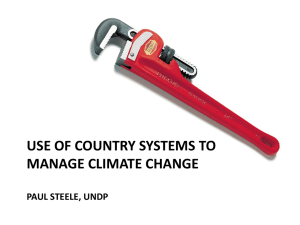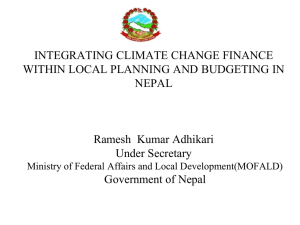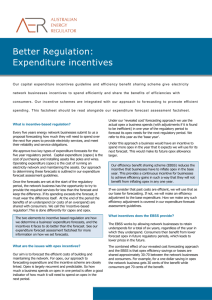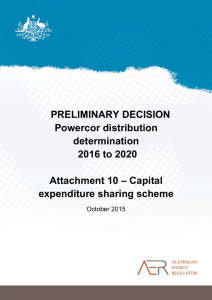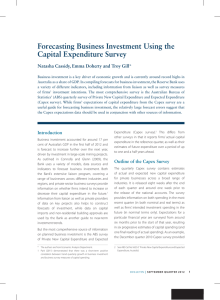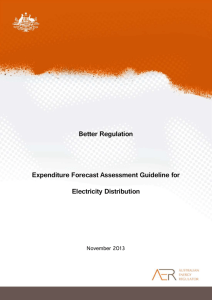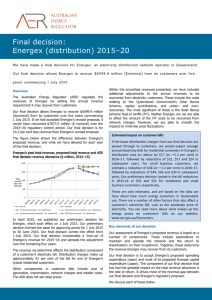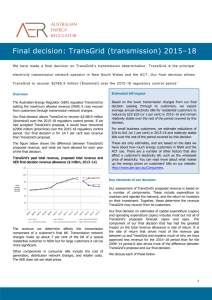techniques proposed
advertisement
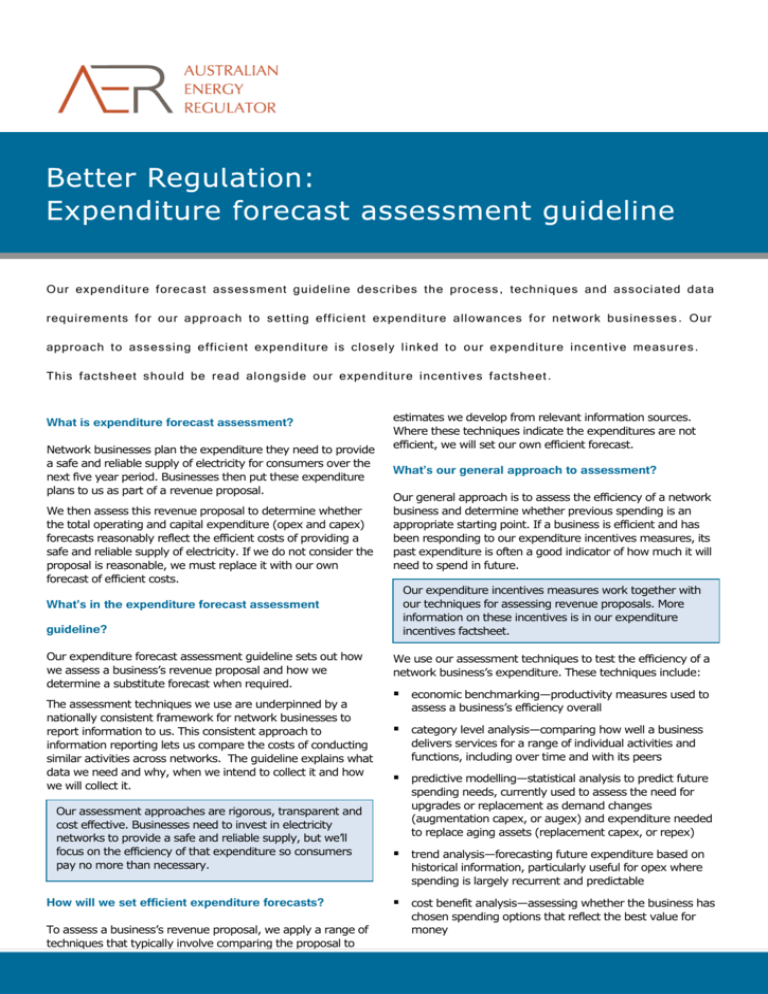
Our expenditure forecast assessment guideline describes the process, techniques and associated data requirements for our approach to setting efficient expenditure allowances for network businesses. Our approach to assessing efficient expenditure is closely linked to our expenditure incentive measures. This factsheet should be read alongside our expenditure incentives factsheet. What is expenditure forecast assessment? Network businesses plan the expenditure they need to provide a safe and reliable supply of electricity for consumers over the next five year period. Businesses then put these expenditure plans to us as part of a revenue proposal. We then assess this revenue proposal to determine whether the total operating and capital expenditure (opex and capex) forecasts reasonably reflect the efficient costs of providing a safe and reliable supply of electricity. If we do not consider the proposal is reasonable, we must replace it with our own forecast of efficient costs. What’s in the expenditure forecast assessment guideline? Our expenditure forecast assessment guideline sets out how we assess a business’s revenue proposal and how we determine a substitute forecast when required. The assessment techniques we use are underpinned by a nationally consistent framework for network businesses to report information to us. This consistent approach to information reporting lets us compare the costs of conducting similar activities across networks. The guideline explains what data we need and why, when we intend to collect it and how we will collect it. Our assessment approaches are rigorous, transparent and cost effective. Businesses need to invest in electricity networks to provide a safe and reliable supply, but we’ll focus on the efficiency of that expenditure so consumers pay no more than necessary. How will we set efficient expenditure forecasts? To assess a business’s revenue proposal, we apply a range of techniques that typically involve comparing the proposal to estimates we develop from relevant information sources. Where these techniques indicate the expenditures are not efficient, we will set our own efficient forecast. What’s our general approach to assessment? Our general approach is to assess the efficiency of a network business and determine whether previous spending is an appropriate starting point. If a business is efficient and has been responding to our expenditure incentives measures, its past expenditure is often a good indicator of how much it will need to spend in future. Our expenditure incentives measures work together with our techniques for assessing revenue proposals. More information on these incentives is in our expenditure incentives factsheet. We use our assessment techniques to test the efficiency of a network business’s expenditure. These techniques include: economic benchmarking—productivity measures used to assess a business’s efficiency overall category level analysis—comparing how well a business delivers services for a range of individual activities and functions, including over time and with its peers predictive modelling—statistical analysis to predict future spending needs, currently used to assess the need for upgrades or replacement as demand changes (augmentation capex, or augex) and expenditure needed to replace aging assets (replacement capex, or repex) trend analysis—forecasting future expenditure based on historical information, particularly useful for opex where spending is largely recurrent and predictable cost benefit analysis—assessing whether the business has chosen spending options that reflect the best value for money A typical assessment process Network business regulatory proposal First pass assessment Benchmarking report AER issues paper Detailed assessment AER draft decision Network business revised proposal Detailed assessment AER final decision project review—a detailed engineering examination of specific proposed projects or programs methodology review—examining processes, assumptions, inputs and models that the business used to develop its proposal governance and policy review—examining the business’s strategic planning, risk management, asset management and prioritisation. The guideline sets out our principles for guiding our reliance on assessment techniques and a business’s forecasting approach. These include validity, accuracy and reliability, parsimony, robustness, transparency and fitness for purpose. How will we assess capex proposals? We will assess businesses’ capex proposals by considering the need for the expenditure, and the efficiency of the proposed projects. This is likely to include a detailed consideration of the demand forecast and the timing, scope, scale and level of expenditure associated with proposed projects. Capex will be assessed in four subcategories. Repex and augex were described above. We’ll also consider capex forecasts associated with connections and other customer driven work and non-network capex (for example IT equipment). We will apply different assessment techniques to each subcategory. For example, we may benchmark the costs of connecting a customer across networks. We also use these assessment techniques to review past capex as set out in our capex incentives guideline. How will we assess opex proposals? As opex is largely recurrent and predictable, we start with the actual opex a business spends in one year of the regulatory period to forecast its opex needs for the next regulatory period. We refer to this year as the ‘base year’. We will use our assessment techniques to determine whether the base year is efficient. Once the base year is set, we apply a rate of change to account for changes in prices, productivity and the outputs the business is required to deliver. If our assessment shows that the base year expenditure is not efficient, we may adjust it or substitute an appropriate amount. How are stakeholders involved? When we receive a business’s revenue proposal we publish it on our website and invite stakeholders to comment. We use our assessment techniques to provide a high level ‘first pass’ preliminary view of the proposal. This is in the issues paper we publish before our formal draft decision. We then publish a draft decision that sets out, among other things, our views on the capex and opex forecasts. We will outline our reasons if we have substituted our own forecast in place of the original proposal. Stakeholders are invited to make submissions on our draft decision and the business can revise its proposal. After considering submissions and the revised proposal, we publish our final decision and analysis. We are also publishing annual benchmarking reports from September 2014. These provide regular information on the relative efficiency of network businesses. Public scrutiny of network businesses’ performance in these reports encourages businesses to improve, and identifies areas we are likely to target in assessing revenue proposals. More information The expenditure forecast assessment guideline is available on our website at http://www.aer.gov.au/node/18864. This guideline forms part of the Better Regulation program. We initiated this program following changes to the regulatory framework in late 2012. The program includes seven new guidelines that outline our revised approach to determining electricity network revenues and prices, and our establishment of the Consumer Challenge Panel. For more information on the Better Regulation program please visit our website www.aer.gov.au/better-regulation-reform-program.






